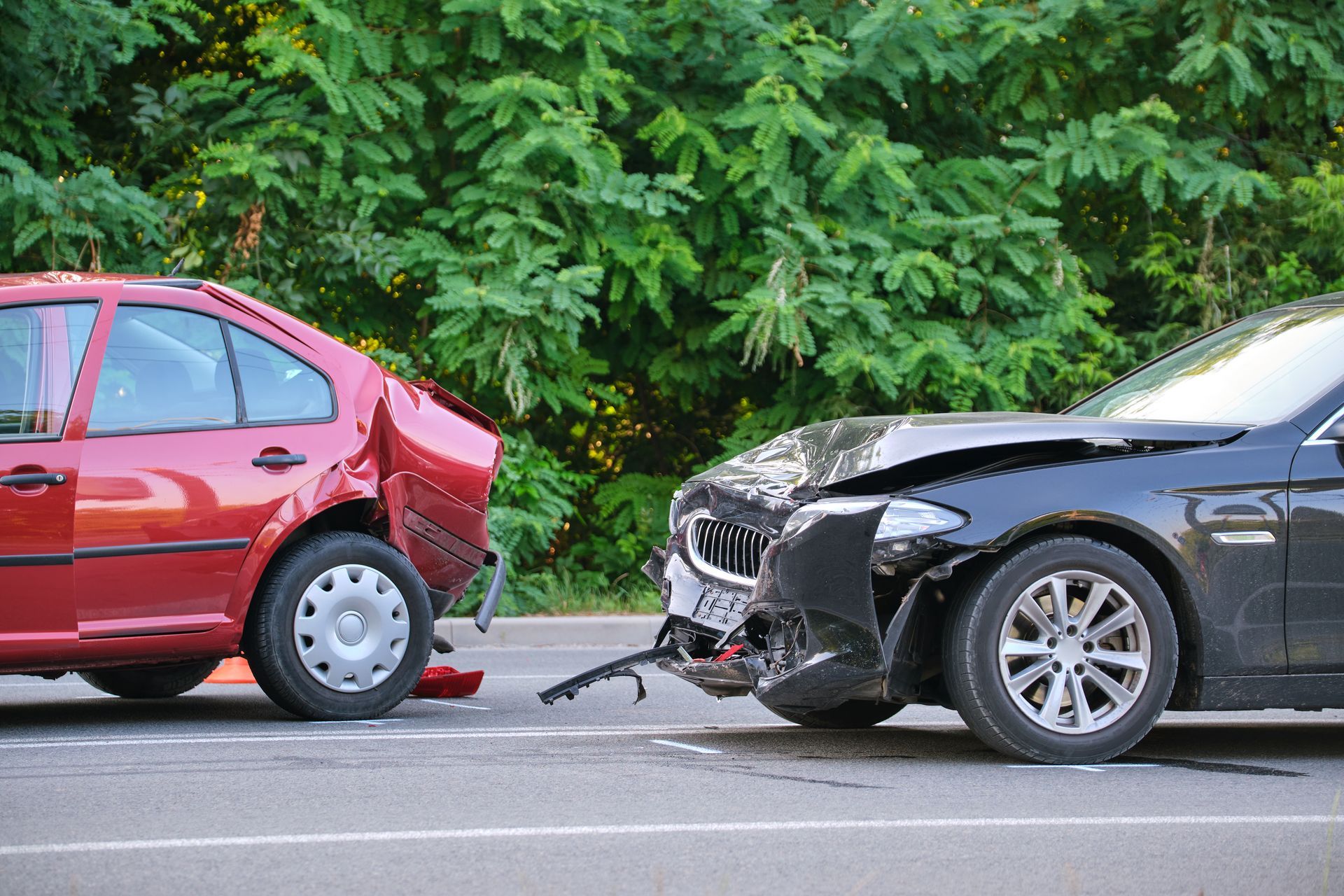Common Mistakes People Make After a Car Crash That Can Hurt Their Claim
On behalf of Harper, Evans, Hilbrenner & Netemeyer
Figuring Out Who’s at Fault in Multi-Car Accidents

Multi-vehicle accidents, often referred to as “pile-ups,” can be some of the most chaotic and devastating types of
traffic incidents. These accidents involve three or more vehicles and can occur in a variety of ways, including chain reactions, rear-end collisions, and even side impacts. When multiple drivers are involved, determining who is at fault becomes a complex legal issue that can have significant consequences for liability, compensation, and insurance claims.
Understanding Multi-Vehicle Accidents
Multi-vehicle accidents happen for various reasons. They often occur in high-traffic areas, on highways, or during poor weather conditions. Some of the most common causes include:
- Rear-End Collisions: These are the most frequent type of multi-vehicle accidents. One car hits another from behind, causing a chain reaction that affects several other vehicles.
- Intersection Crashes: When vehicles run red lights, stop signs, or fail to yield, collisions at intersections can involve multiple cars.
- Highway Pile-Ups: High-speed crashes involving several vehicles, often exacerbated by fog, rain, ice, or snow, can result in massive pile-ups with devastating consequences.
- Sideswipe Accidents: These often occur when one driver changes lanes without checking for vehicles in adjacent lanes, leading to a domino effect as cars attempt to avoid the initial collision.
Given the various scenarios in which multi-vehicle accidents occur, understanding fault is crucial, not only for liability purposes but also for securing fair compensation for injuries and damages.
Key Factors in Fault Determination
When it comes to multi-vehicle accidents, determining fault can be a complex, time-consuming process that requires a thorough investigation. Unlike single or two-vehicle accidents, where one driver is often clearly at fault, multi-vehicle collisions involve many parties, and fault is often shared. The following factors play a significant role in determining fault:
1. Chain of Events
The sequence of events leading up to a multi-vehicle accident is often critical in determining fault. Was one driver’s negligence the root cause? Did another driver’s actions exacerbate the situation? Understanding how the accident unfolded often requires an in-depth analysis of the timeline and actions of each driver involved.
- Example: In a chain-reaction crash, the initial driver who fails to stop in time may bear primary responsibility, but other drivers who were speeding or following too closely may also share some liability.
2. Traffic Laws
Traffic violations are one of the easiest ways to determine fault. Each driver must follow the rules of the road, and failure to do so can lead to liability in an accident. Common violations include:
- Speeding: Drivers going too fast for road or weather conditions are more likely to cause multi-vehicle accidents.
- Failure to Yield: If a driver runs a red light or stop sign, they may initiate a collision with multiple other vehicles.
- Distracted Driving: Drivers distracted by texting, talking on the phone, or eating are more likely to react slowly, leading to multi-vehicle crashes.
Police reports and traffic camera footage often play a significant role in establishing whether traffic violations occurred.
3. Driver Actions
Fault is also determined by analyzing the actions of all drivers involved. A driver who failed to maintain a safe distance, for instance, may be partially responsible for a rear-end collision, even if they weren’t the first car in the chain reaction. Reckless driving behaviors such as weaving between lanes, driving under the influence of alcohol, or tailgating often lead to multi-vehicle crashes and can increase the liable party's share of the fault.
4. Road and Weather Conditions
The conditions of the road and weather at the time of the crash are often key in determining fault. For example:
- Wet or Icy Roads: In inclement weather, drivers are expected to adjust their driving to account for slippery roads. Failure to do so can be seen as negligent driving.
- Poor Visibility: Heavy fog or rain reduces visibility, making it harder for drivers to see cars ahead of them. If a driver doesn’t slow down in these conditions, they could be held liable for causing a collision.
While drivers are responsible for controlling their vehicles, poor road conditions may shift some blame onto municipal agencies responsible for road maintenance, such as in cases where potholes or construction zones contributed to the crash.
5. Vehicle Positioning and Damage
In multi-vehicle accidents, the location of the vehicles and the type of damage sustained can provide clues about the origin and progression of the crash. Accident reconstruction specialists are often employed to map out the incident based on vehicle positions, skid marks, and impact points.
- Example: If the rear of a car is severely damaged while the front remains relatively unscathed, it can suggest that the vehicle was struck from behind and may not have contributed to the crash.
The Role of Law Enforcement and Insurance Companies
Law enforcement officers are typically among the first to arrive at the scene of a multi-vehicle accident. Their role is critical, as they:
- Secure the Scene: Officers ensure that everyone is safe and prevent further damage or injuries.
- Gather Evidence: Police officers collect important evidence, including witness statements, physical damage, road conditions, and vehicle positions.
- File a Police Report: This report becomes an essential document in determining fault, as it summarizes the officer’s observations, the sequence of events, and any traffic violations.
Insurance companies also play a key role in determining fault, but their interests aren’t always aligned with those of the drivers involved. They will conduct their own investigations, which may include reviewing police reports, interviewing witnesses, and assessing vehicle damage. Insurance companies often aim to minimize payouts, which is why having legal representation can be crucial in ensuring that you receive fair compensation.
Legal Implications
In Missouri, when it comes to legal implications in multi-vehicle accidents, the principles of comparative negligence govern the assignment of fault among drivers involved. Under Missouri law, which adheres to the pure comparative negligence rule, each driver's degree of fault determines their ability to seek compensation.
Here's how it works: If a driver is determined to be partially at fault, say 80%, in an accident, they can still pursue damages. However, any compensation they receive will be reduced by their percentage of fault. For instance, if someone is awarded $10,000 but found to be 80% at fault, they would ultimately receive $2,000 (20% of the total damages awarded).
This approach ensures that even drivers significantly responsible for an accident can seek some level of compensation, reflecting Missouri's commitment to fairness in assessing liability in multi-party accidents.
What to Do After a Multi-Vehicle Accident
If you’ve been involved in a multi-vehicle accident, the steps you take immediately after can have a significant impact on your ability to recover compensation:
- Seek Medical Attention: Even if your injuries seem minor, it’s important to get checked out by a medical professional. Some injuries, such as whiplash or internal bleeding, may not be immediately apparent.
- Document the Scene: If you’re able, take photos and videos of the accident scene, including vehicle damage, road conditions, and traffic signs. Collect contact information from witnesses, as their statements can be crucial in proving fault.
- Contact Your Insurance Company: Report the accident to your insurance company as soon as possible, but avoid making statements about fault. Let the investigation play out before taking any blame.
- Consult a Personal Injury Attorney: Multi-vehicle accidents are complex, and you need a legal expert to ensure your rights are protected. The Law Firm of Harper, Evans, Hilbrenner & Netemeyer has extensive experience handling these cases and can help you navigate the complexities of fault determination.
How the Law Firm of Harper, Evans, Hilbrenner & Netemeyer Can Help
Navigating the legal and insurance challenges that come with multi-vehicle accidents is no small task. The attorneys at the Law Firm of Harper, Evans, Hilbrenner & Netemeyer are dedicated to helping victims understand their rights and pursue fair compensation for their injuries and damages.
Our firm’s experience in handling personal injury cases gives us the insight needed to deal with insurance companies, reconstruct accidents, and assign fault accurately. We work tirelessly to protect your interests and maximize your compensation.
Conclusion
Multi-vehicle accidents involve a complex web of events, multiple drivers, and various factors that make fault determination challenging. While law enforcement and insurance companies play critical roles, the best way to ensure your rights are protected is to consult with a knowledgeable attorney. If you or a loved one has been involved in a multi-vehicle accident, the Law Firm of Harper, Evans, Hilbrenner & Netemeyer can guide you through the process, helping you secure the compensation you deserve.
For more information or to schedule a consultation, contact the Law Firm of Harper, Evans, Hilbrenner & Netemeyer today.

